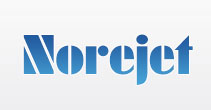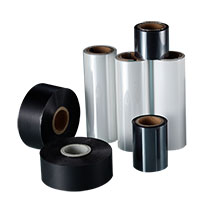
Contact Person: Miss Norejet
Mobile Phone:+8613690188010
WhatsApp:+8613690188010
E-mail: market@norejet.com
skype:christin-tz13
Add:Panyu Area Guangzhou China
How to clean the nozzle of the inkjet printer
As an indispensable equipment in modern industrial production, inkjet printers are widely used in many fields such as food, medicine, daily chemicals, and electronics. Their main function is to print production date, batch number, barcode and other information on product packaging. However, during the use of inkjet printers, the nozzles are easily clogged due to ink drying, impurity deposition or improper operation, affecting the printing effect and efficiency. Therefore, quick cleaning of the nozzle becomes an important step to ensure the normal operation of the inkjet printer. We will introduce in detail the methods, steps and precautions for cleaning the nozzles of inkjet printers to help users solve the problem of nozzle clogging efficiently.
1. Preparation before cleaning
1. Shut down and power off Before performing any cleaning operation, first make sure that the inkjet printer has been shut down and the power supply has been cut off to prevent accidental electric shock or damage to the equipment.
2. Prepare cleaning tools and materials Special cleaning agent: Choose a special cleaning agent suitable for the ink type of the inkjet printer, and avoid using highly corrosive solvents. Soft cloth or cotton swab: used to wipe the residue around the nozzle. Cleaning liquid container: used to hold the cleaning agent and waste liquid generated during the cleaning process. Syringe or ink absorber: used to extract residual ink in the nozzle. Protective gloves: protect your hands from cleaning agents and ink. Paper towels or absorbent cloths: used to absorb moisture after cleaning.
3. Check the nozzle status. Before cleaning, first determine the degree of nozzle blockage through observation or simple testing, so as to adopt a suitable cleaning strategy.
2. Cleaning methods and steps
1. Preliminary cleaning (physical cleaning) Manual cleaning: For minor blockages, you can use a soft cloth or cotton swab to gently wipe the nozzle surface to remove attached impurities. Air pressure cleaning: Use compressed air (make sure it is dry and oil-free) to blow the nozzle to help remove fine particles inside. Note that the air pressure should not be too high to avoid damaging the nozzle structure.
2. Deep cleaning (chemical cleaning) Soaking cleaning: Soak the nozzle in a special cleaning agent for the time specified in the cleaning agent manual to soften and dissolve the blockage. During the soaking period, the container can be gently shaken to promote the contact between the cleaning agent and the blockage. Circulation cleaning: For inkjet printers equipped with a cleaning circulation system, the cleaning program in the system can be used for automatic cleaning. This process needs to be operated in accordance with the equipment manual to ensure the correct ratio and circulation time of the cleaning fluid.
3. Post-cleaning treatment flushing: Use clean water or diluted cleaning agent to thoroughly rinse the nozzle to ensure that all cleaning agent residues are removed. Drying: Use a clean paper towel or absorbent cloth to gently absorb the moisture inside and outside the nozzle to avoid residual moisture causing secondary blockage or corrosion. Test: After cleaning, reinstall the nozzle and perform a printing test to check whether the cleaning effect is satisfactory. If necessary, repeat the above cleaning steps.
3. Precautions during cleaning
1. Safety first Ensure that the operating environment is well ventilated to avoid health hazards caused by the volatilization of cleaning agents. Wear protective gloves and masks to prevent cleaning agents from directly contacting the skin and inhaling harmful gases.
2. Cleaning frequency and timing According to production conditions and ink usage frequency, formulate a reasonable cleaning plan to avoid excessive cleaning causing nozzle wear. When the printing quality is found to be reduced, the machine should be stopped in time to check and clean the nozzle.
3. Selection of cleaning agent Choose a special cleaning agent that matches the ink type of the inkjet printer to avoid nozzle damage caused by improper use. Check the expiration date of the cleaning agent regularly to avoid using expired cleaning agents that affect the cleaning effect.
4. Nozzle maintenance Regularly check the wear of the nozzle and replace the aging or damaged nozzle in time. Avoid using sharp tools to clean the nozzle to avoid scratching the nozzle surface.
5. Record and monitor After each cleaning, record the cleaning time, the type and amount of cleaning agent used, the cleaning effect and other information for subsequent analysis and optimization of the cleaning process. Use the fault alarm and diagnosis function of the inkjet printer to promptly discover and solve the nozzle blockage problem.
4. Summary
The rapid cleaning of the inkjet printer nozzle is a key link to ensure the efficient operation of the inkjet printer. Through reasonable cleaning strategies, correct operating steps and meticulous precautions, the nozzle blockage problem can be effectively solved, the service life of the inkjet printer can be extended, and production efficiency can be improved. Users should formulate personalized cleaning plans according to their own production conditions and inkjet printer models, and pay attention to daily maintenance and care to achieve the best printing effect and economic benefits. At the same time, maintain a learning attitude towards new technologies and new methods, and continuously optimize the cleaning process to adapt to the ever-changing production.


